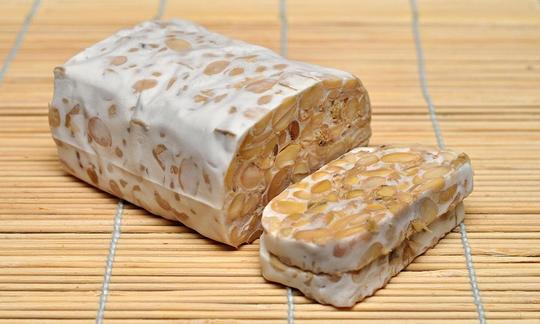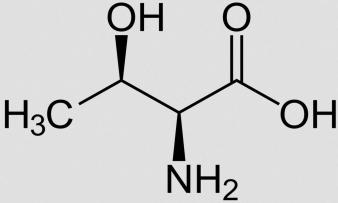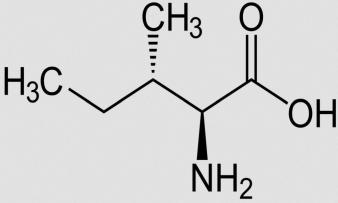Table of contents
Use in the kitchen
What is tempeh? or what does tempeh taste like? The fermented product made from cooked soybeans ( Glycine max) has a mild nutty and mushroom-like taste. Depending on the degree of ripeness, a distinct bean-like aroma is also added. The mold of the genus Rhizopus (e.g. Rhizopus oryzae, Rhizopus oligosporus) used for inoculation forms a hyphae network that stretches around the soybeans, creating a compact block (cake 16). The texture is mushroom-like and ensures a firm but tender bite.
How do you eat tempeh? Tempeh can be used like tofu and is often used as a protein-rich, vegan meat substitute. It can be fried, grilled, steamed, smoked and baked. Its porous surface is ideal for absorbing seasoning sauces (e.g. soy sauce (tamari) or sambal oelek) and spices (e.g. curry, paprika or coriander). Marinades with garlic, ginger and a little maple syrup are also recommended. Tempeh goes well in all kinds of vegetable dishes, rice dishes, casseroles and salads (raw food). Cut into pieces, tempeh is also used in spicy soups. As a vegan skewer, it works well on the grill: served with a chili sauce, the skewer tastes wonderful.
Can you eat tempeh raw? Is tempeh edible raw? Since the soybeans are cooked for the process, tempeh is never raw, i.e. not a raw food. However, you can eat tempeh without cooking or frying it - for example as a vegan cold cut in a sandwich.
Homemade
ingredients: 500 g soybeans (dried and preferably soaked for 12-15 hours, rinsed), 5 tablespoons apple cider vinegar, 1 teaspoon tempeh starter (calculated based on the dry weight of the beans).
Preparation: For the tempeh preparation, Boil the (soaked and rinsed) soybeans in a large pot with plenty of water and cook for approx. 45-60 minutes until tender (al dente). Then pour off the water, drain the soybeans and put them back in the pot. Place the pot on the hot stove so that the remaining moisture can evaporate.
As soon as the cooked soybeans are dry, add apple cider vinegar, stir well and allow the whole thing to cool to 32 °C. Now stir in the starter. Fill the mixture into plastic bags (approx. halfway) and poke several air holes in the bags. Form compact loaves and close them by folding them tightly.
Let the whole thing mature for 24-48 hours in a warm place (30-35 °C) until the white fungus has evenly coated the tempeh. To do this, you can place the bags in the oven with the light on next to a hot water bottle (refill the hot water bottle with hot water every 12 hours). Leave the oven door slightly open for air circulation (e.g. slide a chopstick between the two). The tempeh is ready when it is completely covered with a white film.
Note: If homemade tempeh has reddish or slimy spots, you should throw it away. In this case, the soybeans were not completely dry after cooking. In addition, you should not marinate tempeh during production, but rather after. The liquid can cause unwanted mold to form on the tempeh.
Alternatively, you can also make tempeh with lupine seeds (lupine tempeh),black beans, chickpeas or other legumes such as split peas. 13
Vegan tempeh recipe for cabbage rolls with a mustard sauce
Ingredients (for 4 people): 400 g tempeh (organic), 1 savoy cabbage, 2 onions, 1 teaspoon ground cumin, some rapeseed oil, some salt andpepper, 1 shallot, 200 ml oat cream (vegan), 300 ml vegetable stock, 1 tablespoon mustard, 1 tablespoon mustard powder. Alternatively, you can make your own tempeh, see "Your own preparation".
Preparation: Blanch the large leaves of the savoy cabbage in boiling salted water for about 3 minutes, then rinse in cold water and drain. Cut the remaining savoy cabbage into strips. Peel the onions and cut into rings. Grate the tempeh (neutral or smoked) into coarse pieces.
Heat some rapeseed oil in a large pan and fry the onion rings until translucent. Add the savoy cabbage strips and cumin. Let everything simmer for about 10 minutes with the lid closed. Now add the tempeh pieces and season with salt and pepper. Allow the whole thing to cool. Then fill the large savoy cabbage leaves with it and roll them into roulades, heating briefly according to taste.
For the mustard sauce, finely chop the shallot and fry in a little rapeseed oil until translucent. Then add the mustard powder, deglaze with vegetable stock and simmer. Stir in the oat cream and reduce until it reaches the desired consistency. Finally, add the mustard and season with salt and pepper.
Vegan recipes with tempeh can be found under the note: " Recipes that have the most of this ingredient ".
| Not only vegans or vegetarians should read this: Vegans often eat unhealthily. Avoidable nutritional mistakes. |
Purchasing - Storage
Supermarkets such as Denner, Volg, Spar, Aldi, Lidl, Rewe, Billa, Edeka, Hofer do not currently offer tempeh. Selected supermarkets, such as Migros and Coop, have organic tempeh on offer all year round. The product can occasionally be found in organic supermarkets (e.g. Alnatura and Denn's Biomarkt). Health food stores and online shops mostly offer a selection of tempeh varieties, often in organic quality (bio).
To make the soy product yourself, you need to buy a tempeh culture (tempeh mushroom culture starter). This is easiest to find in online shops (tempeh recipes are usually included free of charge).
The availability of tempeh varies depending on the size of the store, catchment area, etc. If you are interested, click on our recorded food prices for the DA-CH countries (above under the ingredient image). There you will find current prices from various supermarkets and their price development.
Storage tips
Homemade soy tempeh will keep in the fridge for three to four days. Since store-bought products are usually pasteurized or preserved in the package, they can be kept unopened in the fridge for longer (see the packaging instructions).
Can you freeze tempeh? Tempeh freezes well and will keep in the freezer for around six months. Pasteurized tempeh can be kept in the fridge for around 10-14 days. You can cook it in a water bath and then drain it well, or bake it in the oven at 100 °C for 20 minutes.
Ingredients - Nutritional values - Calories
Tempeh ingredients consist of 192 kcal per 100 g, of which only 7.6 g are carbohydrates. The fat content is slightly higher and amounts to 11 g/100g. With proteins of 20 g/100g, which makes up 40.6% of the daily requirement, tempeh is a protein-rich food, comparable to sunflower seeds (21 g/100g). 1
The protein-rich ferment contains many essential amino acids in large quantities. Threonine is worth mentioning at 0.8 g/100g, which makes up 86% of the daily requirement. Raw mung beans (0.78 g/100g) and roasted peanuts (0.81 g/100g) contain a similar amount of threonine. At 1.3 g/100g, peeled hemp seeds significantly exceed the daily requirement of threonine. 1
The amino acid tryptophan is also well represented at 0.19 g/100g (78% of the daily requirement). Raw buckwheat (0.19 g/100g) and bulgur (0.19 g/100g) contain a similar amount of tryptophan. Shelled hemp seeds are also considered a food with a high content (0.61 g/100g). 1
Tempeh also contains a lot of the amino acid isoleucine (0.88 g/100g and 71% of the daily requirement), which is comparable to flaxseed (0.9 g/100g).Driedpumpkin seeds contain 1.3 g/100g and are therefore extremely rich in isoleucine. 1
Tempeh contains vitamin B12 (cobalamin). This is present at 0.08 µg/100g (3% of the daily requirement) and is therefore comparable to the cobalamin content ofbaking yeast (0.07 µg/100g). Yeast flakes are good sources of vitamin B12 at 2 µg/100g. 1
You can find all the ingredients, the coverage of the daily requirement and comparison values with other ingredients in our nutrient tables. In the article Nutrients explained you will get a detailed insight into the topic.
Effects on health
Soy tempeh is a food rich in protein and vitamins and is also cholesterol-free. Consumption of soy protein can reduce the risk of cardiovascular disease, among other things by lowering blood lipid levels. 3 Due to its high protein andfiber content, tempeh is filling and long-lasting. It is suitable for consumption as part of a figure-conscious diet. The soy product is also gluten-free and therefore suitable for people with celiac disease.
Can tempeh cause bloating? Legumes such as soybeans can be difficult to digest and can cause stomach pain and flatulence in some people. The fermentation process, i.e. pre-processing by the Rhizopus fungus, makes the soybeans in the fermentation product more wholesome and easy to digest. 2 Soy tempeh has an antibacterial effect due to the inoculation with the noble mold fungi. 5 The digestive tract and intestinal flora are supported. This leads to a reduction in gastrointestinal complaints. 15
Secondary plant substances
Many of the health effects of tempeh can be attributed to the secondary plant substances it contains. Our article on secondary plant substances provides an overview of the classification of the substance groups, their occurrence in foods and possible effects on humans.
Tempeh contains the following secondary plant substances:
- Isoprenoids: saponins; Terpenes: Triterpenoids: Steroids (phytosterols) 22,23
- Polyphenols: Phenolic acid: Gallic acid, chlorogenic acid, caffeic acid, vanillic acid, p-coumaric acid, sinapic acid and ferulic acid; phytoestrogens: isoflavones (daidzein, genistein and glycitein); flavonoids: flavanones (naringenin), flavonols (kamperol, quercetin) flavanols (catechin, epicatechin) 15,23
- Protease inhibitors : Phytic acid 21
However, it should be noted that the composition of secondary plant substances in tempeh can vary depending on the variety, time of harvest and growing conditions. Therefore, quantities are only of limited use and should only be understood roughly.
Tempeh, as well as unprocessed soybeans, contains phytosterols. These have a cholesterol-lowering effect. However, studies indicate that the bioavailability of these phytosterols in tempeh may be impaired due to their lower solubility. 24
In a study on the effects of eating soy snacks and tempeh on total cholesterol levels in people with hypercholesterolemia, one group consumed soy nuts daily, another consumed tempeh, while a control group received none of the samples. After six weeks, the soy group showed a significant decrease in total cholesterol levels compared to the control group. The tempeh group also showed a decrease, but without significance. In addition, the soy consumers showed a significant reduction in body weight, fat percentage, and visceral fat. The subjects who consumed tempeh experienced a significant decrease in body weight and waist circumference. The study suggests that regular consumption of soy nuts and tempeh with high levels of isoflavones and phytoseroles for six weeks in people with hypercholesterolemia may lead to a trend toward lowering total cholesterol levels. Further studies with a larger sample size and longer duration are recommended to confirm these results. 22
The isoflavones (plant-based substances similar to the sex hormone estrogen) contained in soybeans are said to compensate for the hormone deficiency that occurs during menopause and reduce menopausal symptoms (e.g. hot flushes, sleep disorders). Isoflavones are also said to have a protective effect against hormone-dependent cancers such as breast cancer and prostate cancer. Isoflavones also have a positive effect on the skin, making it more elastic and preventing wrinkles. 4
Free radicals in the body accelerate deterioration, cause tissue damage and promote cell death. They play a major role in the aging process and the development of various degenerative diseases. 20 The body needs antioxidants for this. The antioxidant effect of soy isoflavones is extremely effective in reducing cell damage. 15
A study testing the change in polyphenol content during the fermentation process of soy to tempeh shows that the antioxidant capacity after 4-5 days is 12 times higher than that of unfermented beans. 15
The content of isoflavone aglycones such as daidzein and genistein, which are significantly more bioavailable, also increased by the third day of fermentation. The fermentation time and the type of fungus used for inoculation are important for the fermentation and increase the health-promoting quality of tempeh. 15
Experiments on various processing methods of tempeh such as fermentation, storage and frying showed that less than 10% of the existing phytic acid remained in the tempeh after completion. This further improves the digestibility and mineral absorption of tempeh. 21
It should be noted that tempeh is made from peeled soybeans, so substances such as anthocyanins and tannins, which are found in the seed coat of soybeans, are not included in the list of secondary plant substances mentioned above. The antioxidant capacity of tempeh is mainly due to the polyphenols present.
Dangers - Intolerances - Side effects
Some sources say that phytoestrogens (including the isoflavones contained in soy products) have a feminizing effect and thus trigger a change in gender-related behavior. According to a scientific article by Jargin, however, this feminization can only be minimal in individual cases and statistically proven only in large populations. 6 In contrast, the results of another meta-analysis show that isoflavones and soy protein do not influence the concentration of men's reproductive hormones and thus no feminization occurs. 7 Further research should provide clarity.
There are also suspicions that soy products, with their phytoestrogen content, could affect the thyroid and its hormone production. According to a meta-analysis by Otun, soy products have no effect on thyroid hormones. Although a slight increase in the TSH level (a measure of thyroid function), i.e. a slight stimulation of hormone production, is possible, the clinical significance of this increase is unclear. 8
Is tempeh unhealthy? Tempeh has a high ratio of omega-6 fatty acids to omega-3 fatty acids (16:1). By eating it, you therefore consume too many omega-6 fatty acids compared to omega-3 fatty acids. If the ratio is constantly too high, the risk of cardiovascular disease can increase. In addition, too high a content of omega-6 fatty acids promotes the formation of substances that cause inflammation, which can have a negative effect on chronic inflammation (eg arthritis, intestinal diseases). 9
As a fermented food, tempeh has a high histamine content and is therefore not suitable for people with histamine intolerance.
Folk medicine - naturopathy
In traditional Chinese medicine ( TCM), tempe is said to help tonify the blood and the Qi (vital force). 10
Ecological footprint - animal welfare
Tempeh is known as a protein-rich vegan meat substitute, but with a much smaller ecological footprint than meat. 12 The amount of CO 2 produced depends, among other things, on the origin of the soybeans and the transport routes (see also soybeans). Ideally, when buying organic tempeh, you should buy it from regional, organic and GMO-free soybeans. 2 No clearing of tropical rainforests takes place for these and the greenhouse gases emitted during transport are lower than with imported products from other continents. You can also pay attention to regionality with special types of tempeh (based on other legumes such as black beans or chickpeas). 14
Since the production, transport and sale of tempeh requires more time and resources than soybeans alone, its ecological footprint is also higher (this statement refers to soybeans produced in Europe) .17,18 In comparison to tofu, however, it is smaller.19 The by-product ( okara) that arises during the production of soy milk or tofu can also be used to make tempeh.12 This could be an emission-saving, effective way of production.
The production of tempeh requires soaking, peeling, cooking and fermenting the soybeans. 12 Of all these steps, the cooking process has the highest global warming potential due to the CO 2 released, provided the product is sold locally. 18
For detailed explanations of various sustainability indicators (such as ecological footprint, CO2 footprint, water footprint), see our article: What does the ecological footprint mean?
Worldwide occurrence - cultivation
It is believed that tempeh originated many centuries ago in Indonesia (more precisely on the island of Java). In the surrounding countries, such as China, Japan and Thailand, soybeans are an important part of the diet, but tempeh is relatively unknown. In Indonesia, tempeh has long been a protein-rich staple food and one of the most popular fermented foods. The Indonesian soybean dish is eaten there almost every day as a main meal in a variety of variations - or fried as a snack. Many households in Indonesia still produce their own tempeh. 2,11
Tempeh also meets the needs of Western tastes well. It is becoming increasingly popular in Europe and the USA. 11
Further information
Tempeh variants are not only made from soybeans, but alternatively from various legumes, such as lentils,black beans or chickpeas.
According to Linguee and the Bio-Food Handbook, tempeh is neuter (n.). 2 However, the masculine variant can also be found less frequently on the Internet.
Alternative names
In German and English you will come across the spellings Tempe or Tempeh (more common in German) - you will almost never read: Tempé. In Indonesian the variant tempe is common (older: témpé). 16
Tampeh or Tempech is wrong.
Phytosterols are present in okara, as well as in unprocessed soybeans. However, studies indicate that the bioavailability of these phytosterols in okara may be impaired due to their lower solubility.
Bibliography - 22 Sources
| 1. | USDA United States Department of Agriculture. |
| 2. | Pini U. Das Bio-Food Handbuch. Ullmann Verlag: Potsdam; 2014: 733. |
| 3. | Craig WJ. Nutrition concerns and health effects of vegetarian diets. Nutrition in Clinical Practice. 2010; 25(6): 613-620. |
| 4. | Messina M. Soy and health update: evaluation of the clinical and epidemiologic literature. Nutrients. 2016;8(12):754. |
| 5. | Roubos-van den Hil PJ, Dalmas E, Nout MJR, Abee T. Soya bean tempe extracts show antibacterial activity against Bacillus cereus cells and spores. J Appl Microbiol. 2010; 109(1):137-145. |
| 6. | Jargin SV. Soy and phytoestrogens: possible side effects. GMS Ger Med Sci. 2014; 12: Doc18. |
| 7. | Hamilton-Reeves JM, Vazquez G, Duval SJ et al. Clinical studies show no effects of soy protein or isoflavones on reproductive hormones in men: results of a meta-analysis. Fertility and Sterility. 2010;94(3):997-1007. |
| 8. | Otun J, Sahebkar A, Östlundh L et al. Systematic review and meta-analysis on the effect of soy on thyroid function. Scientific Reports. 2019;9(1):3964. |
| 9. | Simopoulos AP. The importance of the ratio of omega-6/omega-3 essential fatty acids. Biomed Pharmacother. 2002;56(8):365-379. |
| 10. | Draxe.com Tempeh: A Fermented Soybean with Many Probiotic Benefits. |
| 11. | Nout MJR, Kiers JL. Tempe fermentation, innovation and functionality: update into the third millenium. Journal of Applied Microbiology. 2005;98(4):789-805. |
| 12. | Ahnan‐Winarno AD, Cordeiro L, Winarno FG et al. Tempeh: A semicentennial review on its health benefits, fermentation, safety, processing, sustainability, and affordability. Comprehensive Reviews in Food Science and Food Safety. 2021;20(2):1717-1767. |
| 13. | Smarticular.net Tempeh selber machen: einfaches Rezept mit regionalen Schälerbsen. |
| 14. | Tempehmanufaktur.net Schwarze Bohne: Exotisches auf Allgäuer Bio-Feldern. |
| 15. | Kuligowski M, Jasinska-Kuligowska I, Nowak J. Evaluation of Bean and Soy Tempeh Influence on Intestinal Bacteria and Estimation of Antibacterial Properties of Bean Tempeh. Polish Journal of Microbiology 2013;62(2):189–194. |
| 16. | Soyinfocenter.com Soy from a Historical Perspective. History of Tempeh. 2004. |
| 18. | Supartono W, Fiwa AS, Sinthia ID et al. Implementation of Life Cycle Assessment on Tempeh Production at "Tempe Ibu Sujati", Yogyakarta. Agroindustrial Journal. 2020; Vol 7: 496-500. |
| 20. | Dwiatmaka Y, Lukitaningsih E et al. Fermentation of Soybean Seeds Using Rhizopus oligosporus for Tempeh Production and Standardization Based on Isoflavones Content. Int J Appl Pharm. 2022;14(6):131-136. |
| 21. | Sutardi, Buckle KA. Reduction in phytic acid levels in soybeans during tempeh production, storage, and frying. J Food Sci. 1985;50(1):260-263. |
| 22. | Hermawati NZ, Muliadi RD et al. Cholesterol-lowering effect of soy nuts and tempeh on hypercholesterolemic subjects. J Funct Food Nutr. 2012;4(2):95-102. |
| 23. | Abdullah N, Wan Kamarudin WS et al. Phenolic acids, flavonoids profiles and antioxidant activity of tempeh protein hydrolysate prepared from soybean tempeh. Proceedings of the International Conference on Food Quality, Safety and Security. 2017;1:38-49. |
| 24. | Luo ZJ, Shen XM et al. Preparation and Characterization of Okara Protein-phytosterol Nanoparticles. Modern Food Science and Technology. 2021;37(10):112-117. |









Comments